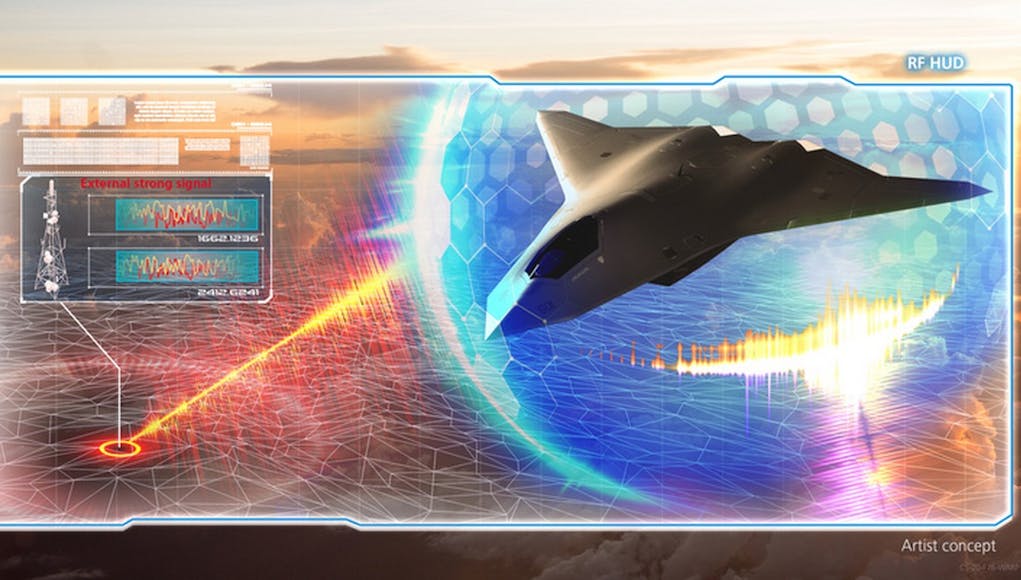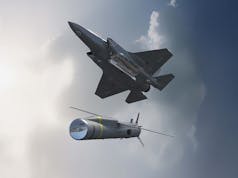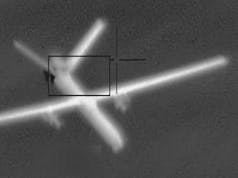Technology to protect emerging wideband receivers from interference, enabling their use in contested and congested environments, is being developed by BAE.
BAE Systems say they will design mechanisms for the U.S. Defense Advanced Research Projects Agency (DARPA) that protect emerging wideband receivers from interference, enabling their use in contested and congested environments.
“DARPA awarded two contracts to BAE Systems totaling $5 million under the Wideband Adaptive RF Protection (WARP) program which is designed to develop wideband adaptive filtering and signal cancellation architectures to safeguard emerging wideband receivers against both external and self-interference.”
“The ability to control signal strength across the electromagnetic spectrum is critical to the robust operation of wideband RF electronics,” said Chris Rappa, product line director at BAE Systems’ FAST Labs research and development organization.
“WARP signal filters and cancellers will sense and adapt to the electromagnetic environment through the intelligent control of adaptive hardware.”
The technical areas of the programme focus on enhancing electronic warfare technology to improve “adaptive control of electromagnetic spectrum” – enabling allied forces to freely operate while denying that advantage to adversaries.
Specifically, Technical Area 1 is focused on mitigating external interference and Technical Area 2 is focused on mitigating self-interference from co-located transmitters to enable same-frequency simultaneous transmit and receive, also known as STAR.














ermmm …. huh ?
it would take too long to explain sorry as it is highly technical
init…… !
I think it means defence for satellite bandwidth so we can operate UAV’S and share huge amounts of date between platforms when the bad guys are trying to be silly buggers.
RF stuff is hard. lol
That fighter design is something we should be doing. But apparently, that gets fellow commenters the hump. We all know tailerons are a thing of the past, just like canards are. They’re giant radar-reflecting surfaces that will ultimately be dropped for 6th gen jets.
All the more reason why we need to focus on jet thrust through the surface controls i.e. Bae Magma and rudder flaps on the wings alla Taranis.
Ermmm Huh ? (Again) lol……
The fighter shown in the thumbnail. That’s the FA/XX.
And for all we know, Tempest may look something like that.
No indications that it will; so far.
I would take the plastic mock up of Tempest with a very large pinch of Salt in reference to what it’s final design layout will look like.
I hope so
No indications it won’t. All concept images so far are very unlikely to resemble the final design.
At high speed its easy to suppress them today.
But for low speed it’s not the same.
Thats why the NGF comes from this view:
https://ams3.digitaloceanspaces.com/rewyer-storage-001/media/3f83802fbafcda0b18d1bb8e920001ff8a770a59687134493b9c3a9b237e5526.jpg
To this:
https://www.aerospatium.info/wp-content/uploads/2019/06/DA00037245_M.jpg
I don’t quite follow what you mean. Could you elaborate?
I’m pretty good with comms, modern military tech and the implementation of tactics and asymmetric warfare ISTAR etc…..but….sometimes I don’t have a clue what’s being said 😂.
Ok people seem to be struggling I will try and simplify with an analogy.
Traditionally radios operated on a single frequency, you tuned a receiver to pick up that particular broadcast frequency and could filter out the noise to get the signal, if it was being jammed you and your partner will try switching to a different pre-arranged backup frequency instead. Nowadays with high bandwidth requirements and to try and defeat jamming they will broadcast a signal on several different radio frequencies simultaneously either the same data on different frequencies to try and find one which will break through jamming/interference, or alternately broadcasting snippets of a larger whole on different frequencies to increase bandwidth. This requires tuning a radio to several channels and filtering each of them individually. (its like trying to focus your hearing and pick out exclusively the sound of a few individual orchestra instruments in a concert hall ignoring the rest of the sounds)
With Wideband filtering however rather than tune your radio to a single or small group of frequencies you listen to a large chunk of the radio spectrum at once and filter out every signal you receive from interference to uncover all the genuine digital manmade signals underneath which would include the particular ones you want to hear. (this is like listening to an orchestra and instead of trying to pick out and focus exclusively on individual instruments you are listening for the musical composition in its entirety and filtering out the other unwanted background noises like coughing and chewing so that your hearing the complete performance)
This requires far more receiver tuning and processing of signals to work.
Good description.
It may also help people to understand what jamming is: someone sending a more powerful signal at the same frequency as your signal to drown it out. Thus, in the same way as the signals Watcherzero described above, you can generally only jam specific frequencies at a time- depending on how many different channels you can broadcast your noise on at the same time.
Similarly this is how spoofing works except that, instead of just white noise, the override signal is one that looks like the real thing.
This is particularly of issue with signals to and from satellites, as they are comparatively low power by the time they reach us (signal strength drops off very quickly with distance). It is comparatively easy to jam or spoof the weak signal coming from space with a jamming transmitter located closer, because it will have a higher signal strength where it is being received.
What is being described here is a way to beat this stronger jamming signal without having to keep endlessly boosting the signal strength of the original message- which would require ever bigger power sources etc. etc.
Maybe everyone knew this, but just thought it might be a helpful addtion.
Something about protecting communications from the enemy
Say again, Over.
I had to google ‘self-interference’ but I wasn’t quite expecting the results I got back. No wonder planes have autopilots so they can fly hands-free.